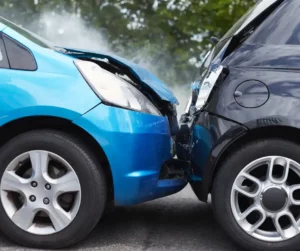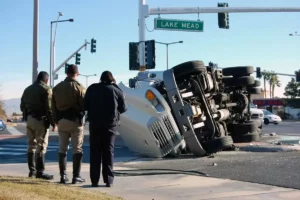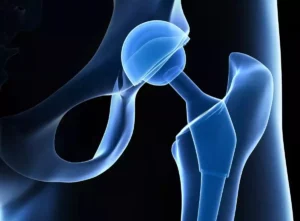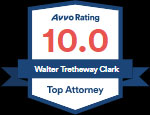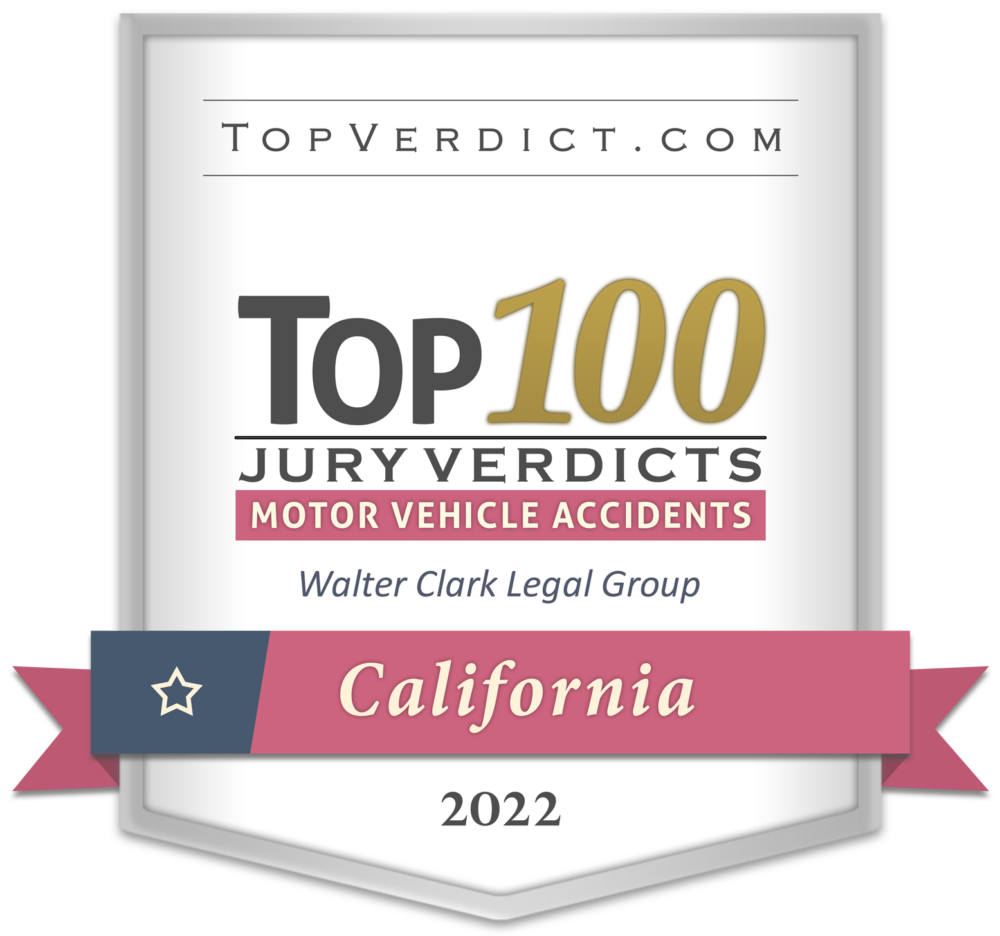*This post was originally published on April 11, 2018. It has been updated to include new information.
Research continues to show that drivers are more distracted than ever. And statistics show that more than 90% of auto accidents in the U.S. are a result of human error. The introduction of fully autonomous vehicles promises to reduce car accidents, as well as eliminate the problem of distracted driving. But how far off is that reality? How do U.S. drivers feel about giving up the wheel? And how safe is “safe enough” to allow autonomous vehicles to be sold in the U.S.?
Self-Driving School Bus Test Terminated
In October, the National Highway Traffic Safety Administration (NHTSA) ordered an autonomous vehicle company to immediately stop its testing of a self-driving school bus in a Florida community. The company, Transdev North America, was using a self-driving shuttle to transport children to and from school as part of a six-week pilot project. It cut the experiment a week short after the NHTSA issued its statement.
Transdev noted that it believed the test program met all NHTSA requirements for such a project, and that the shuttle was operating safely in a controlled environment. But the NHTSA stated that the use of a test vehicle to transport children was irresponsible and in violation of the company’s test project terms.
Thus, while autonomous vehicles continue to be tested around the U.S., regulators have made it clear that, in some ways, these vehicles simply aren’t “there yet.”
138 Million U.S. Drivers Admit to Distracted Driving
The unfortunate reality is that, despite research demonstrating the immense dangers of distracted driving, drivers are still extremely distracted. A study conducted by Finder.com found that 138 million American adults admitted to driving while distracted. About 30% of drivers surveyed admitted to driving over the speed limited, and another 8% said they fix their appearance while driving. Millenials are the most likely age group to drive distracted, and they are four times more likely than Baby Boomers to text behind the wheel. Only 40.7% of drivers surveyed claimed to concentrate completely on the road while driving.
Interestingly enough, when it comes to their own driving abilities, U.S. drivers are very confident in themselves. Nearly three-quarters of drivers surveyed by AAA consider themselves to be better than average drivers. Men were more likely to consider themselves good drivers, and 79% of Baby Boomers consider themselves better than average drivers. These numbers seem to contrast with the fact that most drivers also admit to driving distracted. And the alarmingly high number of accidents on U.S. roadways—16 million per year—also seems incompatible with drivers’ confidence in their driving abilities. With 94% of car accidents resulting from human error, and 138 million Americans admitting to driving distracted, the case for autonomous vehicle technology is a strong one.
Americans Still Apprehensive About Self-Driving Cars
Yet, Americans remain concerned about autonomous vehicle safety. Despite the admissions of distracted driving, most drivers are still fearful of self-driving cars. According to a AAA study, 63% of U.S. drivers fear riding in a fully autonomous vehicle. While that is down from 78% last year, it still means a majority of drivers are hesitant about self-driving vehicles. Only half of the drivers surveyed said they wanted semi-autonomous technology in their next vehicle purchase.
In California, the climate on autonomous vehicles largely reflects the rest of the country. A SurveyUSA News Poll of 1,100 California adults found that 58% of respondents believe self-driving vehicles should not be allowed on their neighborhood streets. Additionally, 57% said they would feel unsafe riding in an autonomous vehicle
California Making Strides in Autonomous Vehicle Testing
The California Department of Motor Vehicles (DMV) has issued rules allowing companies to test autonomous vehicles without drivers. Those rules took effect this week. Additionally, the California Public Utilities Commission issued a proposal that would allow autonomous vehicle developers to offer rides to the public. The commission says its proposed rules will complement the DMV rules and provide protections for passengers. The rules will be voted on next month and would allow for self-driving vehicle companies to get the public more involved with the technology. According to the proposed rules, companies would have to hold an autonomous vehicle testing permit for at least 90 days before offering rides to passengers. The service to passengers must be free, passengers must be 18 years or older, and trips to the airport would not be allowed. Companies would also have to file reports to regulators.
How Safe is Safe Enough?
As autonomous vehicles undergo more testing, the question on many people’s minds is: how safe is safe enough, when it comes to putting these vehicles on the road? There currently is not an accepted definition of a sufficiently safe autonomous vehicle.
Some people might think autonomous vehicles should be nearly perfect before they can be sold to the public. However, researchers at the RAND Corporation say that line of thought could cost thousands of lives. Autonomous vehicles are not perfect, and it will take time for them to get to that point. But RAND researchers argue that getting these vehicles onto roads sooner will actually save more lives than delaying their use. Last year, 32,500 people died on U.S. roadways, with more than 90% caused by human error. This number could be drastically reduced with the introduction of autonomous vehicles. However, it is important to understand that crashes will still occur.
To demonstrate the human cost of delaying the introduction of autonomous vehicles to our roadways, RAND researchers came up with a model that examines different future scenarios. In most cases, introducing self-driving cars sooner rather than later saved more lives in the short time. Moreover, earlier introduction would save more lives in the long term, under all 500 scenarios created.
Still, the lack of an agreed upon standard of autonomous vehicle safety is a problem. Until that measurement is made clear and regulating bodies can come together in agreement, there will continue to be confusion over the safety of these vehicles and what the public should expect of them.
“Autonomous vehicles show great promise in reducing crashes and saving lives. However, there is still a lot of work to be done to ensure these vehicles are sufficiently safe to be introduced to the public,” said Attorney Walter Clark, founder of Walter Clark Legal Group.
Our firm has been handling personal injury cases throughout the California Low Desert and High Desert communities for over 30 years. With a 95% success rate, the personal injury attorneys at Walter Clark Legal Group will fight to hold those responsible for your loss accountable and win compensation to cover medical bills, lost wages, and pain and suffering. If you have been injured in an auto accident and want to discuss your legal options, contact us today for a free consultation with an experienced personal injury lawyer. We have offices in Indio, Rancho Mirage, Victorville, and Yucca Valley and represent clients through the entire California Low Desert and High Desert communities.
DISCLAIMER: The Walter Clark Legal Group blog is intended for general information purposes only and is not intended as legal or medical advice. References to laws are based on general legal practices and vary by location. Information reported comes from secondary news sources. We do handle these types of cases, but whether or not the individuals and/or loved ones involved in these accidents choose to be represented by a law firm is a personal choice we respect. Should you find any of the information incorrect, we welcome you to contact us with corrections.
- What To Do If You Have Been Injured At A Concert In California? Mar 27,2024
- Walter Clark Legal Group Reimburses Thanksgiving Ride Fares Nov 14,2023
- Walter Clark Legal Group Donates Backpacks to Booker T. Washington Elementary School Aug 22,2023
- Walter Clark Legal Group Donates Backpacks to Underserved Students Aug 22,2023
- Walter Clark Legal Group Reimburses Labor Day Ride Fares Aug 21,2023
- 2023 Safe Ride Home Program Jun 21,2023









